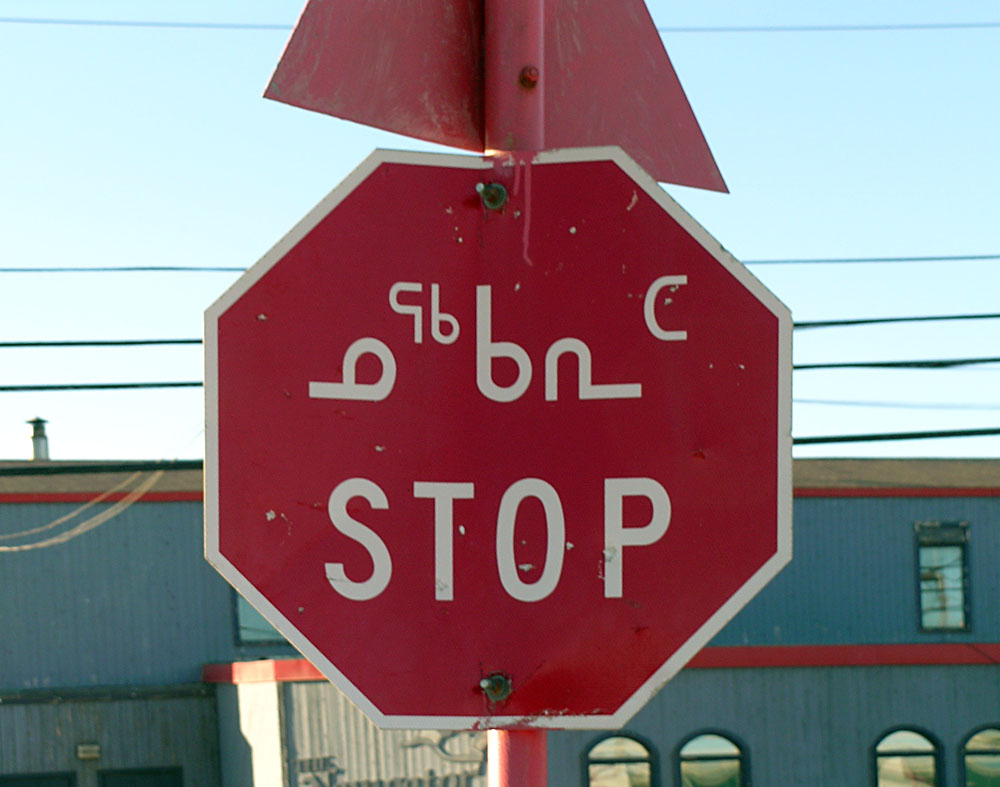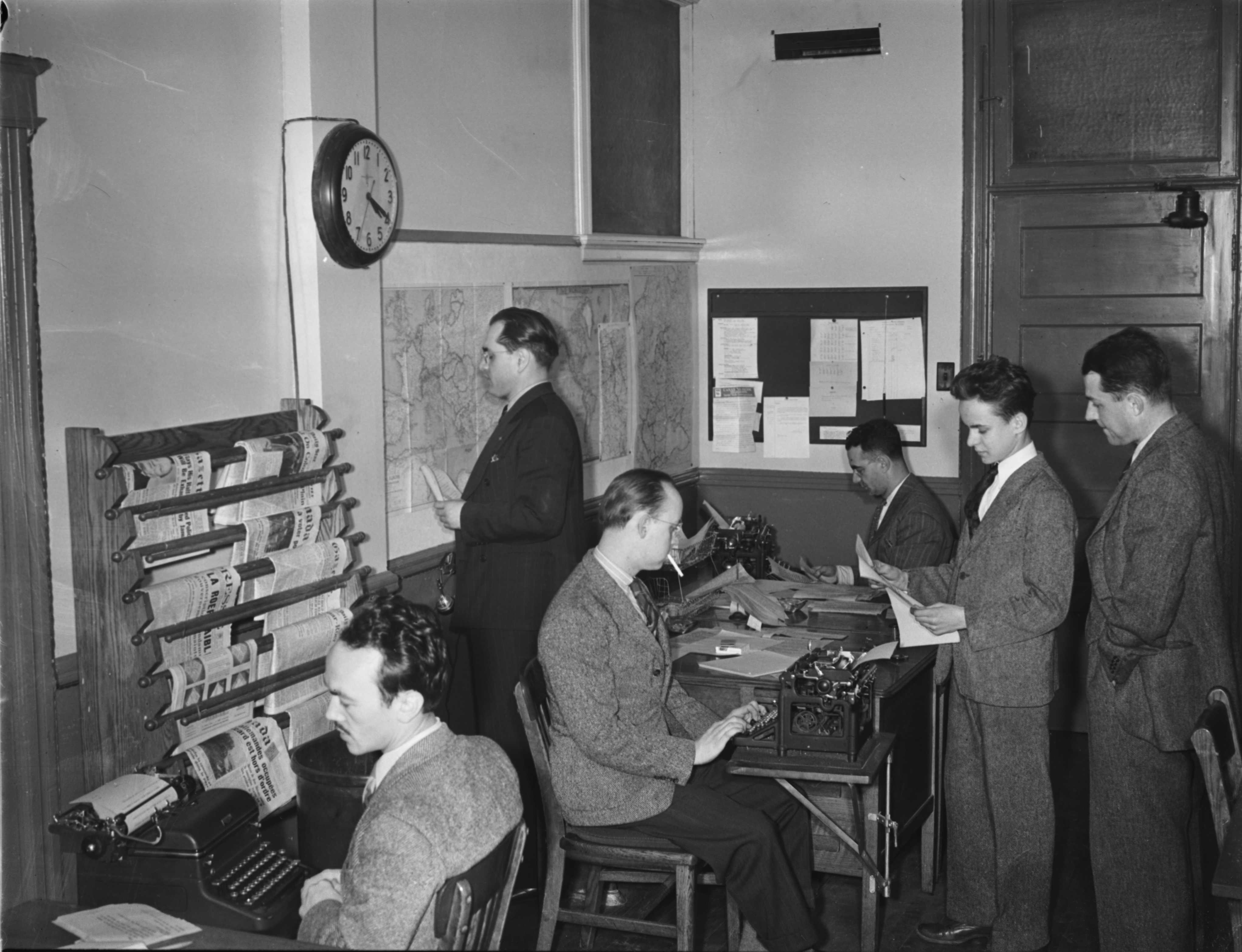|
Inuinnaqtun Language
Inuinnaqtun (; natively meaning ''like the real human beings/peoples''), is an indigenous Inuit language. It is spoken in the central Canadian Arctic. It is related very closely to Inuktitut, and some scholars, such as Richard Condon, believe that Inuinnaqtun is more appropriately classified as a dialect of Inuktitut. The government of Nunavut recognises Inuinnaqtun as an official language in addition to Inuktitut, and together sometimes referred to as Inuktut.''Official Languages Act'', S.Nu. 2008, c. 10 s. 3(1) wit s. 1(2). It is also spoken in the |
Nunavut
Nunavut ( , ; iu, ᓄᓇᕗᑦ , ; ) is the largest and northernmost territory of Canada. It was separated officially from the Northwest Territories on April 1, 1999, via the '' Nunavut Act'' and the '' Nunavut Land Claims Agreement Act'', which provided this territory to the Inuit for independent government. The boundaries had been drawn in 1993. The creation of Nunavut resulted in the first major change to Canada's political map in half a century since the province of Newfoundland was admitted in 1949. Nunavut comprises a major portion of Northern Canada and most of the Arctic Archipelago. Its vast territory makes it the fifth-largest country subdivision in the world, as well as North America's second-largest (after Greenland). The capital Iqaluit (formerly Frobisher Bay), on Baffin Island in the east, was chosen by a capital plebiscite in 1995. Other major communities include the regional centres of Rankin Inlet and Cambridge Bay. Nunavut also includes Elle ... [...More Info...] [...Related Items...] OR: [Wikipedia] [Google] [Baidu] |
Kitikmeot Region
Kitikmeot Region (; Inuktitut: ''Qitirmiut'' ) is an administrative region of Nunavut, Canada. It consists of the southern and eastern parts of Victoria Island with the adjacent part of the mainland as far as the Boothia Peninsula, together with King William Island and the southern portion of Prince of Wales Island. The regional centre is Cambridge Bay (population 1,766;). Before 1999, Kitikmeot Region existed under slightly different boundaries as Kitikmeot Region, Northwest Territories. Transportation Access to the territorial capital of Iqaluit is difficult and expensive as the only direct flight is from Cambridge Bay, which began during the COVID-19 pandemic in Canada. For example, Iqaluit is approximately from Kugaaruk, the closest Kitikmeot community. A one-way flight to the capital costs between $2,691 and $2,911 (as of November 2016) and involves flying to, along with an overnight stay in, Yellowknife, Northwest Territories, approximately southwest of Kugaa ... [...More Info...] [...Related Items...] OR: [Wikipedia] [Google] [Baidu] |
Indigenous Languages Of The North American Arctic
Indigenous may refer to: *Indigenous peoples *Indigenous (ecology), presence in a region as the result of only natural processes, with no human intervention * Indigenous (band), an American blues-rock band * Indigenous (horse), a Hong Kong racehorse * ''Indigenous'' (film), Australian, 2016 See also *Disappeared indigenous women *Indigenous Australians *Indigenous language *Indigenous religion Indigenous religions is a category used in the study of religion to demarcate the religious belief systems of communities described as being " indigenous". This category is often juxtaposed against others such as the " world religions" and "new ... * Indigenous peoples in Canada * Native (other) * * {{disambiguation ... [...More Info...] [...Related Items...] OR: [Wikipedia] [Google] [Baidu] |
Inuvialuit Languages
The Inuvialuit (sing. Inuvialuk; ''the real people'') or Western Canadian Inuit are Inuit who live in the western Canadian Arctic region. They, like all other Inuit, are descendants of the Thule who migrated eastward from Alaska. Their homeland – the Inuvialuit Settlement Region – covers the Arctic Ocean coastline area from the Alaskan border, east through the Beaufort Sea and beyond the Amundsen Gulf which includes some of the western Canadian Arctic Islands, as well as the inland community of Aklavik and part of Yukon. The land was demarked in 1984 by the Inuvialuit Final Agreement. History and migration The Inuvialuit Settlement Region was primarily inhabited by ''Siglit'' Inuit until their numbers were decimated by the introduction of new diseases in the second half of the 19th century. Nunatamiut, Alaskan Inuit, moved into traditional Siglit areas in the 1910s and 20s, enticed in part by renewed demand for furs from the Hudson's Bay Company and European markets. T ... [...More Info...] [...Related Items...] OR: [Wikipedia] [Google] [Baidu] |
Agglutinative Languages
An agglutinative language is a type of synthetic language with morphology that primarily uses agglutination. Words may contain different morphemes to determine their meanings, but all of these morphemes (including stems and affixes) tend to remain unchanged after their unions, although this is not a rule: for example, Finnish is a typical agglutinative language, but morphemes are subject to (sometimes unpredictable) consonant alternations called consonant gradation. Despite the occasional outliers, agglutinative languages tend to have more easily deducible word meanings if compared to fusional languages, which allow unpredictable modifications in either or both the phonetics or spelling of one or more morphemes within a word. This usually results in a shortening of the word, or it provides easier pronunciation. Overview Agglutinative languages have generally one grammatical category per affix while fusional languages have multiple. The term was introduced by Wilhelm von Humbold ... [...More Info...] [...Related Items...] OR: [Wikipedia] [Google] [Baidu] |
Utkuhiksalik
Utkuhiksalik, Utkuhikhalik, Utkuhikhaliq, Utkuhiksalingmiutitut, Utkuhiksalingmiutut,Briggs, J. L. (1970), Never in anger. Portrait of an Eskimo family. Harvard University Press. Utkuhiksalingmiut Inuktitut, Utku,, Gjoa Haven dialect, is a sub-dialect of Natsilingmiutut (''Nattiliŋmiut'') dialect of Inuvialuktun (Western Canadian Inuit or Inuktitut) language once spoken in the Utkuhiksalik (ᐅᑦᑯᓯᒃᓴᓕᒃ Chantrey Inlet) area of Nunavut, and now spoken mainly by elders in Uqsuqtuuq (or Uqšuqtuuq ᐅᖅᓱᖅᑑᖅ Gjoa Haven) and Qamani'tuaq (ᖃᒪᓂ‛ᑐᐊᖅ Baker Lake) on mainland Canada. It is generally written in Inuktitut syllabics. The traditional territory of the Utkuhiksalingmiut / Utkuhikhalingmiut / Ukkusiksalingmiut / Utkusiksalinmiut / Ukkuhikhalinmiut (meaning "the people of the place where there is soapstone" or "people who have cooking pots") people lay between Chantrey Inlet and Franklin Lake. They made their pots (''utkuhik'' ~ ''utkusik'') ... [...More Info...] [...Related Items...] OR: [Wikipedia] [Google] [Baidu] |
Natsilingmiutut
Netsilik , Natsilik, Nattilik, Netsilingmiut, Natsilingmiutut, Nattilingmiutut, or Nattiliŋmiutut is an Inuit language variety spoken in western Nunavut, Canada, by Netsilik Inuit. ''Natsilingmiut'' (ᓇᑦᓯᓕᖕᒥᐅᑦ "people from Natsilik") came from ''natsik'' “seal” + postbase ''-lik'' “place with something” + postbase ''-miut'' “inhabitants of”. Classification * There are three main dialect divisions of Natsilingmiutut dialect: ** Natsilik subdialect, or Natsilik/Netsilik proper ** Arviligjuaq subdialect ** Illuiliq subdialect Special letters Natsilik dialect has the special letters: š ř ŋ, used by some Nattiliŋmiut speakers. š – sounds a bit like English "shr" and is distinct from both the ''s'' sound that is used in words borrowed from English and the more common ''h'' sound. :ᐅᖅᓱᖅᑑᖅ ''Uqšuqtuuq'' Gjoa Haven :ᒥᒃᓵᓄᑦ ''mikšaanut'' about :ᓯᒃᓯᒃ ''hikšik'' ground squirrel, marmot :New encodings in Unicode ... [...More Info...] [...Related Items...] OR: [Wikipedia] [Google] [Baidu] |
Inuktitut Syllabics
Inuktitut syllabics ( iu, ᖃᓂᐅᔮᖅᐸᐃᑦ, qaniujaaqpait, or , ) is an abugida-type writing system used in Canada by the Inuktitut-speaking Inuit of the territory of Nunavut and the Nunavik and Nunatsiavut regions of Quebec and Labrador, respectively. In 1976, the Language Commission of the Inuit Cultural Institute made it the co-official script for the Inuit languages, along with the Latin script. The name derives from the root , meaning "mouth". The alternative, Latin-based writing system is named (), and it derives from , a word describing the markings or the grain in rocks. meaning "new writing system" is to be seen in contrast to (), the "old syllabics" used before the reforms of 1976. History The first efforts to write Inuktitut came from Moravian missionaries in Greenland and Labrador in the mid-19th century using Latin script. The first book printed in Inuktitut using Cree script was an 8-page pamphlet known as ''Selections from the Gospels in the dia ... [...More Info...] [...Related Items...] OR: [Wikipedia] [Google] [Baidu] |
Canadian Broadcasting Corporation
The Canadian Broadcasting Corporation (french: Société Radio-Canada), branded as CBC/Radio-Canada, is a Canadian public broadcaster for both radio and television. It is a federal Crown corporation that receives funding from the government. The English- and French-language service units of the corporation are commonly known as CBC and Radio-Canada, respectively. Although some local stations in Canada predate the CBC's founding, CBC is the oldest existing broadcasting network in Canada. The CBC was established on November 2, 1936. The CBC operates four terrestrial radio networks: The English-language CBC Radio One and CBC Music, and the French-language Ici Radio-Canada Première and Ici Musique. (International radio service Radio Canada International historically transmitted via shortwave radio, but since 2012 its content is only available as podcasts on its website.) The CBC also operates two terrestrial television networks, the English-language CBC Television and the F ... [...More Info...] [...Related Items...] OR: [Wikipedia] [Google] [Baidu] |
Latin Script
The Latin script, also known as Roman script, is an alphabetic writing system based on the letters of the classical Latin alphabet, derived from a form of the Greek alphabet which was in use in the ancient Greece, Greek city of Cumae, in southern Italy (Magna Grecia). It was adopted by the Etruscan civilization, Etruscans and subsequently by the Ancient Rome, Romans. Several Latin-script alphabets exist, which differ in graphemes, collation and phonetic values from the classical Latin alphabet. The Latin script is the basis of the International Phonetic Alphabet, and the 26 most widespread letters are the letters contained in the ISO basic Latin alphabet. Latin script is the basis for the largest number of alphabets of any writing system and is the List of writing systems by adoption, most widely adopted writing system in the world. Latin script is used as the standard method of writing for most Western and Central, and some Eastern, European languages as well as many languages ... [...More Info...] [...Related Items...] OR: [Wikipedia] [Google] [Baidu] |
Kangiryuarmiutun
''Kangiryuarmiutun'' (sometimes ''Kangirjuarmiut(un)''), is a dialect of Inuit language spoken in Ulukhaktok, Northwest Territories, Canada by the Kangiryuarmiut, a Copper Inuit group. The dialect is part of the Inuvialuktun language. The people of Ulukhaktok prefer to think of it as Inuinnaqtun and it is essentially the same. It is derived from Kangiryuak (meaning "the big bay"), and named for the people that lived there, the Kangiryuarmiut, which is known by its English name Prince Albert Sound, Victoria Island Victoria Island ( ikt, Kitlineq, italic=yes) is a large island in the Arctic Archipelago that straddles the boundary between Nunavut and the Northwest Territories of Canada. It is the eighth-largest island in the world, and at in area, it is .... Victoria Island is the ancestral home of the Copper Inuit. Vocabulary comparison The comparison of some animal names in the Siglitun and Kangiryuarmiutun subdialects of the Inuinnaqtun dialect of Inuvialuktu ... [...More Info...] [...Related Items...] OR: [Wikipedia] [Google] [Baidu] |


